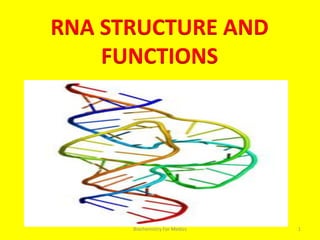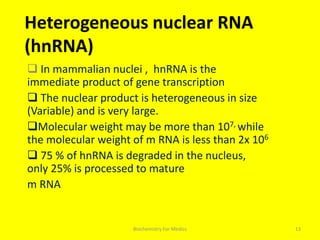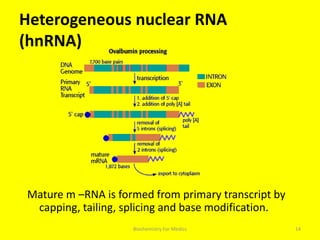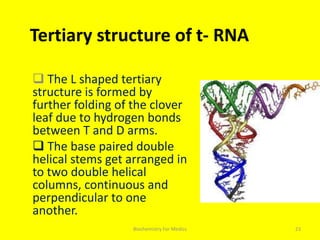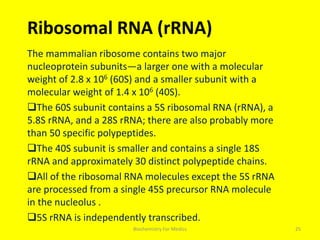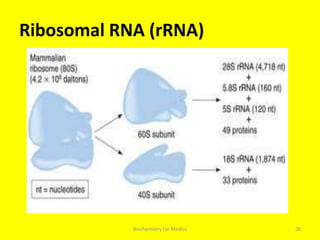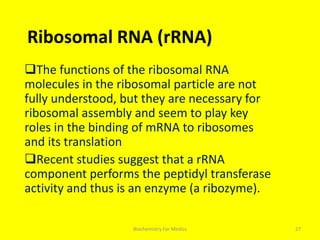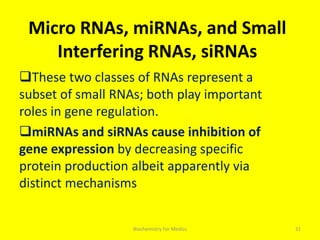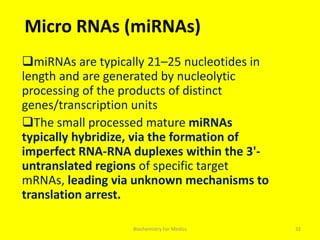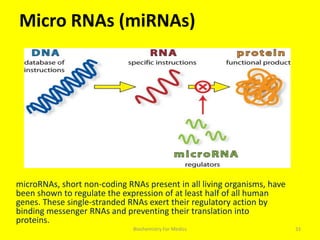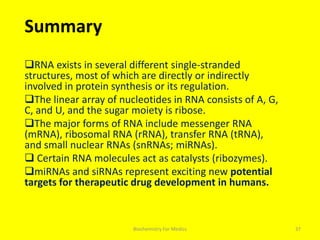RNA has several types that perform different functions in the cell. Messenger RNA (mRNA) carries genetic information from DNA to the ribosomes for protein synthesis. Transfer RNA (tRNA) transfers amino acids to the ribosome during protein synthesis by binding to mRNA codons through complementary base pairing. Ribosomal RNA (rRNA) is the major constituent of ribosomes and plays key roles in protein synthesis such as catalyzing peptide bond formation. The different RNA types have distinct structures that enable their functions.
